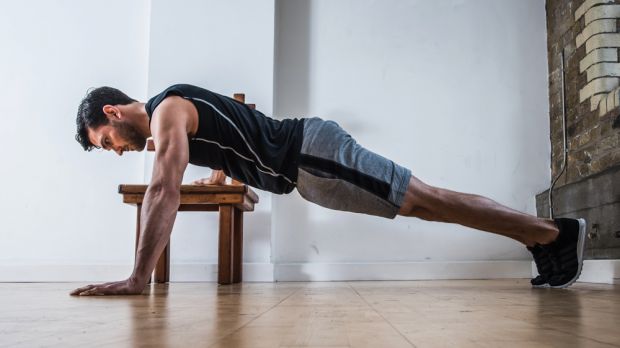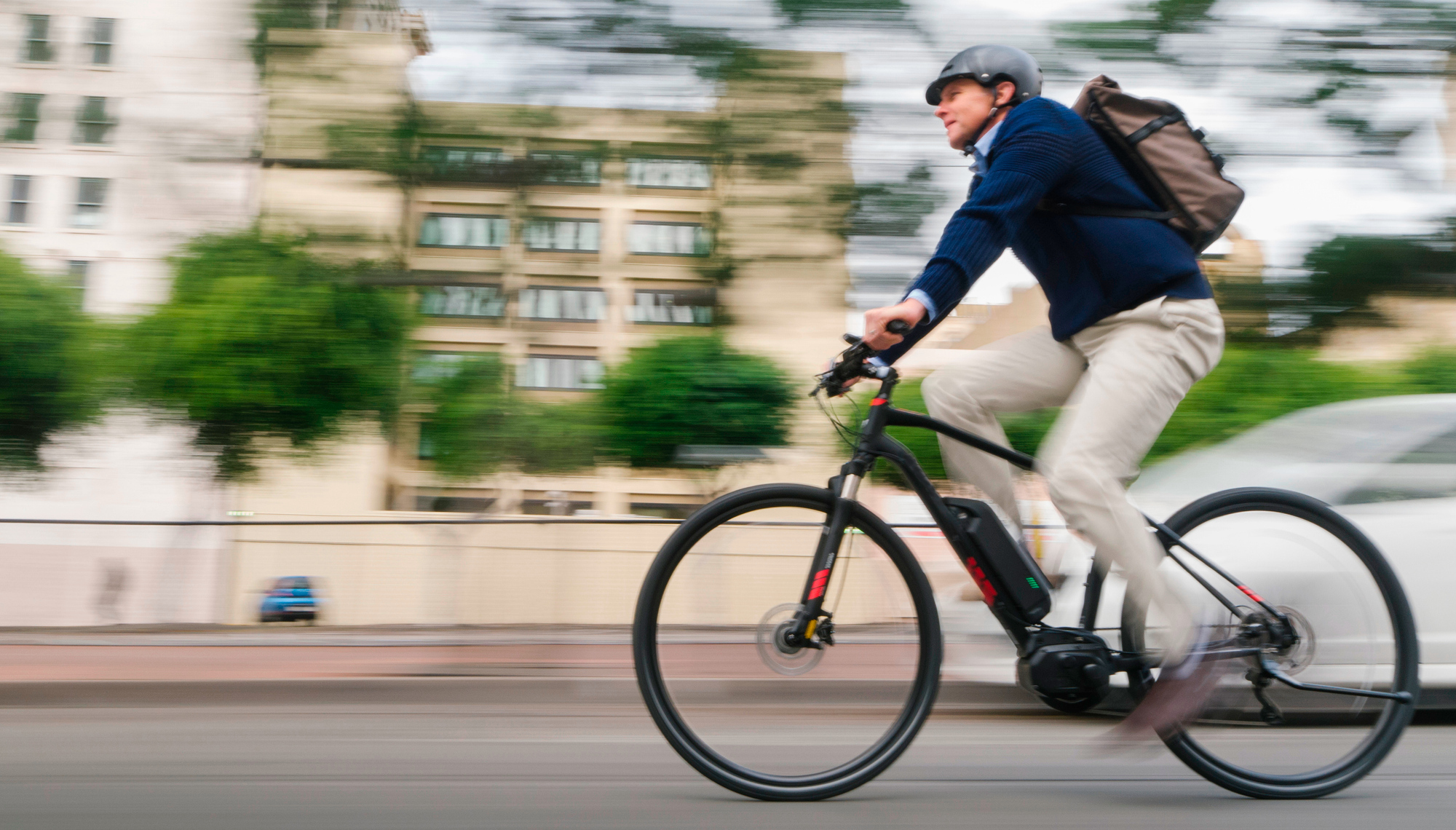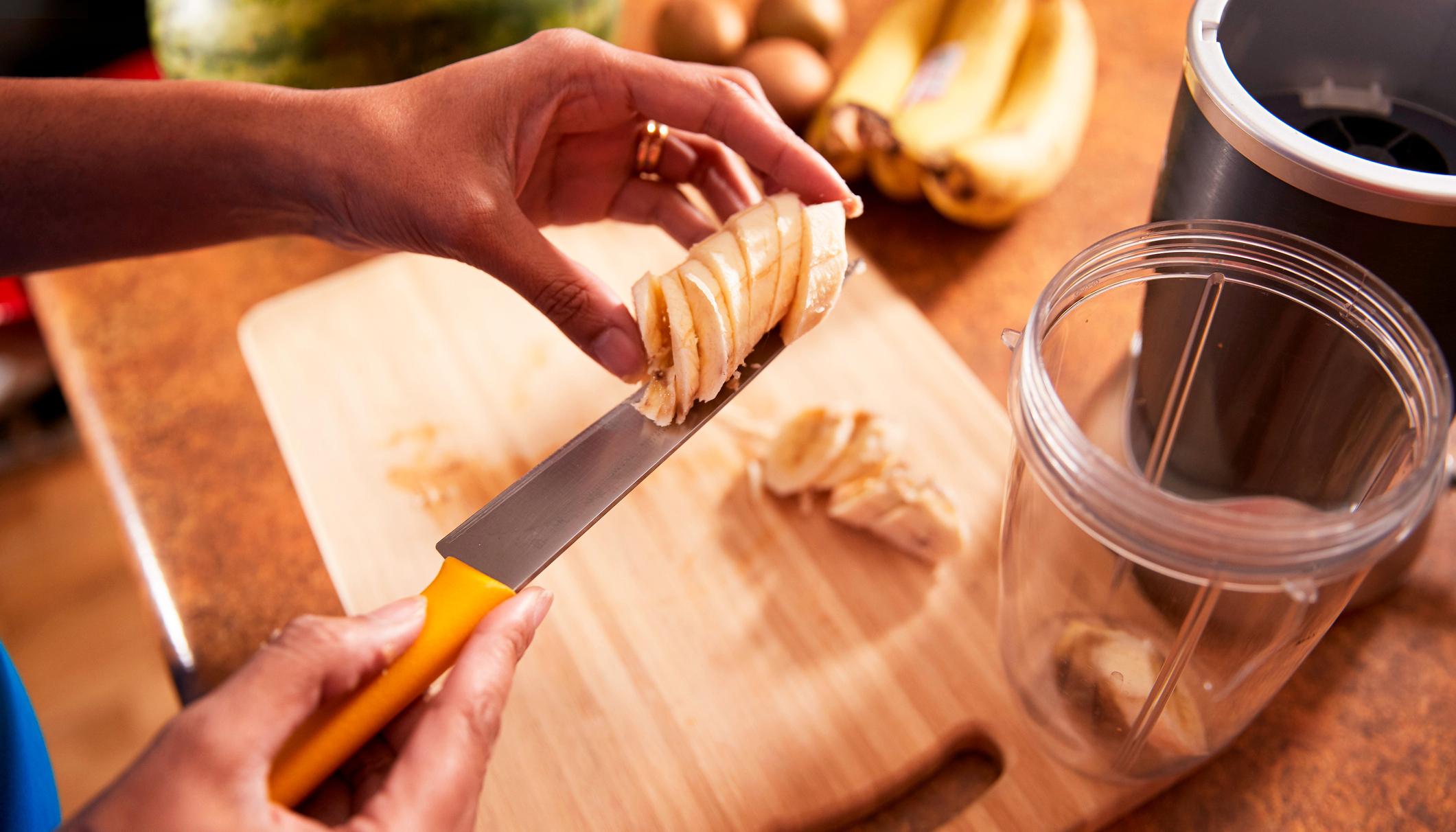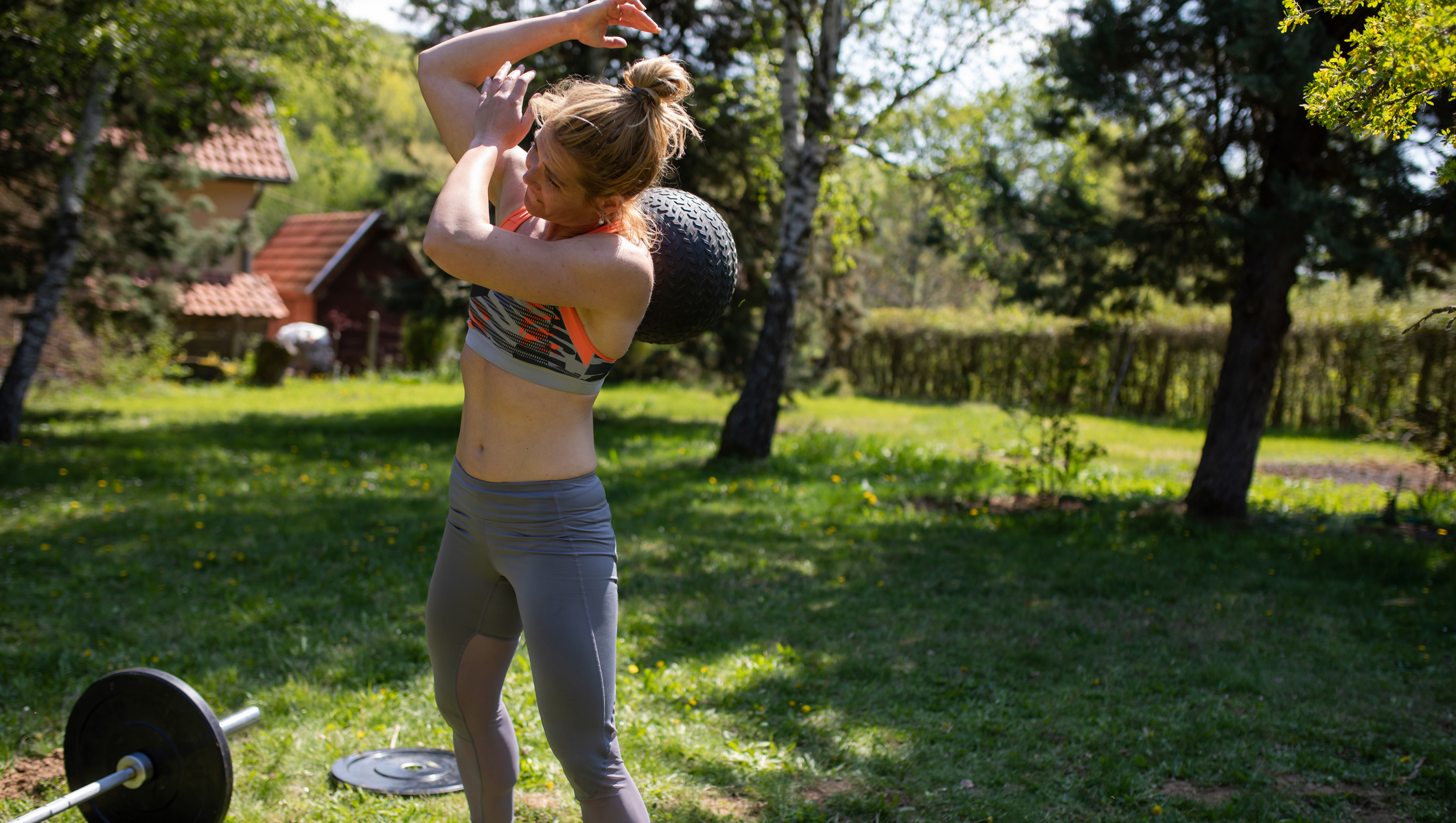The Best Home Chest Workout To Build Bigger Pecs With No Equipment
Want to add extra chest sessions to your week without heading to the gym? With this home workout, all you need is a floor

If you want a bigger chest then you’ll have to perform chest workouts that feature the bench press, dumbbell flye and cable flye. As you may have noticed, they all require equipment found in a gym, but you may also have spotted the glaring omission from that list – the press-up.
The press-up is an effective chest exercise which also has seemingly endless variations, used to great effect in this bodyweight home chest workout, designed by strength and conditioning expert JC Santana. The press-up variations involved ensure that you hit the muscles in your chest and arms from all manner of different directions so every part of your upper body gets a thorough workout.
It’s a challenging session best suited to an experienced gym-goer, and it will be most effective if used as an add-on to a gym workout routine. If you find the routine below is beyond you, our press-up challenge will help you progressively improve your ability to perform the move. And if you’re looking to add muscle to your chest without a gym membership, you may want to browse our selection of the best dumbbells and follow this home chest workout with dumbbells.
Can you build chest muscle with your bodyweight?
That’s exactly what we asked Emily Servante, global trainer education manager at Ultimate Performance, in our guide to bodyweight workouts – and the answer is a resounding yes! But you need to know how to increase the difficulty beyond just doing more reps.
“You can increase the intensity by slowing down the tempo,” says Servante. “For example, if you perform a press-up with both feet on a chair, and slow the eccentric [lowering] portion of the movement to four seconds, doing six to 12 reps will feel more difficult. Next time, slow the eccentric portion of that movement to five seconds, then six seconds and so on. Trust me, your chest muscles will grow!”
How To Do This Home Chest Workout
Aim to do this workout once or twice a week, and slip it into your routine 48 hours away from any chest or upper-body workouts you do in the gym. Run through a round of each exercise without taking any rest – or with as little rest as possible – and then take a two-minute break before going into another round. Start with three rounds, and see if you can add more over time as you get stronger.
The Workout
Rotational press-up
Reps 20
Start in a press-up position and lower yourself to one side, twisting as you do so most of your weight is on one shoulder. Press up, then do the same on the other side. That’s two reps.
Shuffle press-up
Reps 20
Get the Coach Newsletter
Sign up for workout ideas, training advice, reviews of the latest gear and more.
Get in a press-up position with one hand ahead of your shoulder and one behind. Lower yourself to the floor and press up. That’s one rep. At the top of the move, jump or walk your hands into the opposite position, then do the next rep. Continue alternating.
Diamond press-up
Reps 10
For this triceps blaster, position your hands together under your chest so your index fingers and thumbs form a triangle, and lower yourself until your chest touches your hands. Press back up to the start.
Gorilla press-up
Reps 10
Start in a standard press-up position, lower yourself to the floor and then press up quickly, launching yourself off the floor. Slap your chest quickly before returning your hands to the start position.
One-leg press-up
Reps 10
Raise one leg, keeping your glutes tight, and do a press-up. Switch legs and repeat. That’s two reps. Now do the rest.
More Home Workout Chest Moves
After a few weeks of doing that workout, add variety by switching out some of the moves with these ones. Even if it’s just a slight variation on the move it’s always good to hit your muscles in different ways and from different angles to ensure maximum growth.
Offset press-up

Get in a press-up position with one hand elevated on a stable surface. Keeping your core engaged, bend your elbows to lower your chest, keeping your elbows close to your sides, then press back up to return to the start. At the end of the set, switch hands and do the same number of reps again. Brace your abs and squeeze your glutes to keep your entire torso stable to make the most of each rep. You can place your feet slightly further apart than in a normal press-up to make the move easier.
This technique tweak not only looks impressive, it also places greater emphasis on your triceps muscles to help you add arm size. Pressing your bodyweight up and down with one hand elevated shifts the emphasis more to your triceps and requires greater core control. It’s also slightly easier but far more satisfying to do than diamond press-ups. Always do the same number of reps each side for balanced size and strength improvements.
Spider-Man press-up

Start in a press-up position. Keeping your weight on your arms, bend your elbows to lower your chest. As you lower, draw one knee in towards your elbow. Pause at the bottom, then press back up and return your leg as you do, then repeat with your other knee. Alternate with each rep. Engage your core before each set by pulling in your bellybutton to tense your abs and deep core muscles. Being fully engaged will keep your body stable and let you draw your knee all the way in.
This tougher-than-it-looks move recruits not only the standard press-up muscles but also your entire core for a serious abs workout. Your upper and lower abs also need to be fully engaged to draw one knee up to your elbow and back again, and you’ll activate the deep stabilising muscles of your core to keep your whole body stable throughout each rep.
Divebomb press-up

Start with your body in a V-shape. Brace your core, then lower your head and chest towards your hands, moving your body forwards in an arc as your head nears the floor. Keep moving your torso forwards until your head is facing forwards and your chest is up. Raise your hips to return to the start position. Don’t obsess over rep numbers with this move: instead, focus on feeling the different muscles at work at each point of the rep to build a strong mind-to-muscle connection that will improve muscle activation.
During each rep, many different muscles are engaged and placed under tension. The down-and-forwards then up-and-backwards movement also makes your chest, shoulders, triceps and core work in different and more challenging ways from the standard press-up. Despite the aggressive-sounding name, the key to this exercise is maintaining a smooth movement path – the whole rep should be fluid and performed at an even tempo.
Corkscrew press-up
Start in a press-up position but with your hands in front of your shoulders. As you bend your elbows to lower your chest towards the floor, twist your hips to one side and then back the other way, keeping your core engaged throughout. Then press back to the start. Starting with your hands further forward works your shoulders harder, while adding a hip rotation with each rep recruits your core and lower abs muscles.
Archer press-up
Start in a normal press-up position but extend one arm out to the side. Return to the start. Repeat with your other arm. This variation tests those small but important stabilising muscles of the shoulder that must work hard to support your bodyweight as you lower then lift your torso repeatedly. It also works your core muscles, which are forced to maintain torso stability with each rep.
Dynamic box press-up
Place both hands on a box in the diamond press-up position. Lower your body and press as explosively as you can off the box, so your hands are able to land on the floor with the box placed between them. Immediately lower your body and press explosively up so that your hands land straight back on the box in the position that you started in. That counts as one rep. Watch your chin, though – people have been known to catch theirs on the box mid-rep. Not pretty.
Nick Hutchings worked for Men’s Fitness UK, which predated, and then shared a website with, Coach. Nick worked as digital editor from 2008 to 2011, head of content until 2014, and finally editor-in-chief until 2015.









